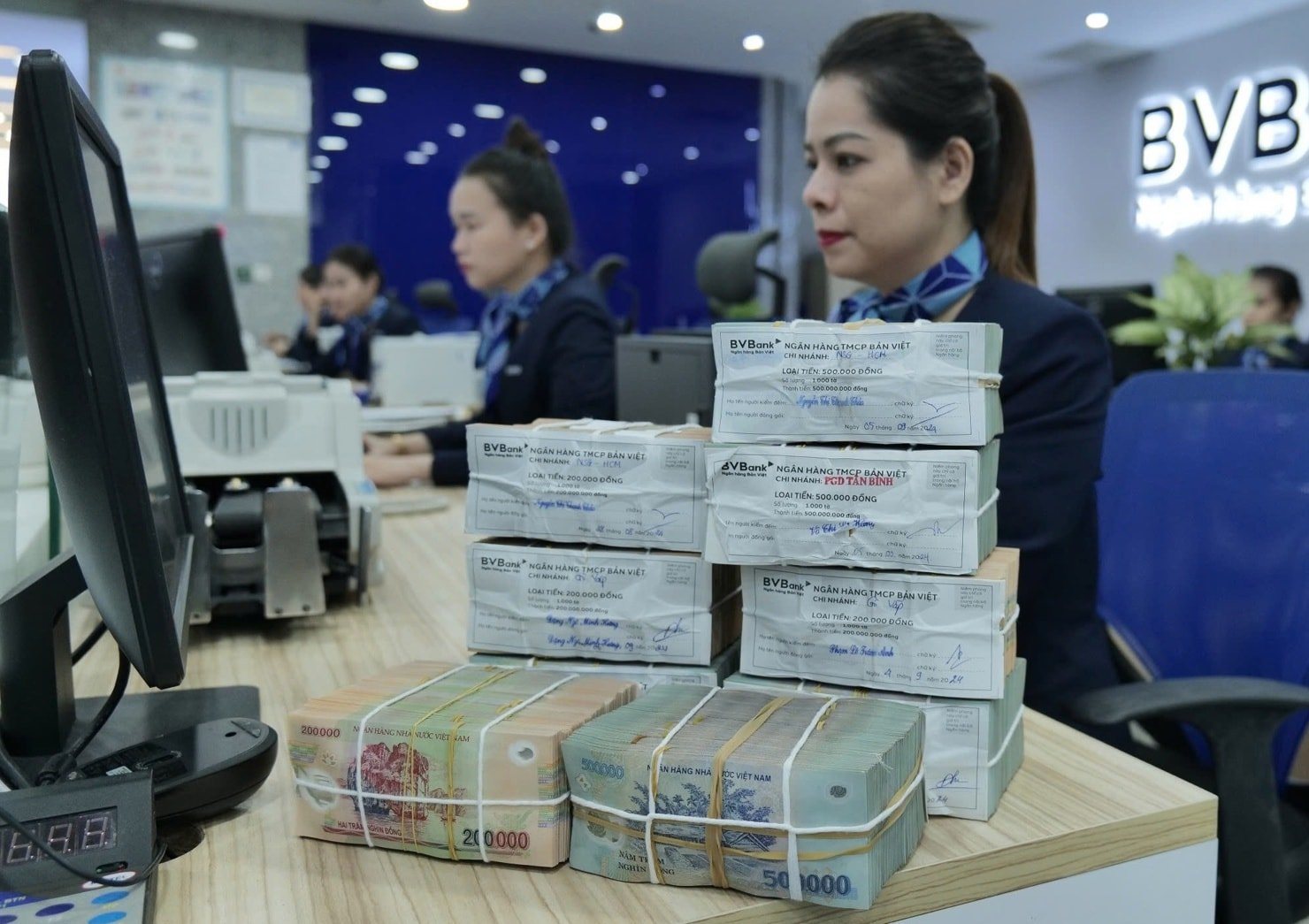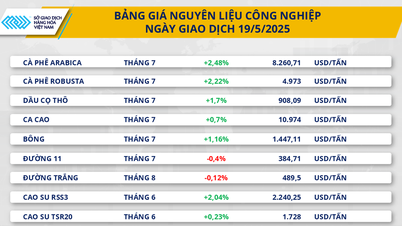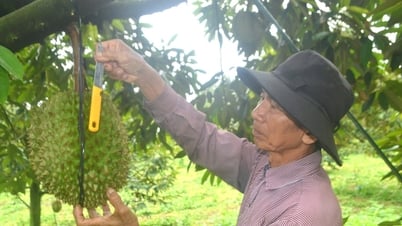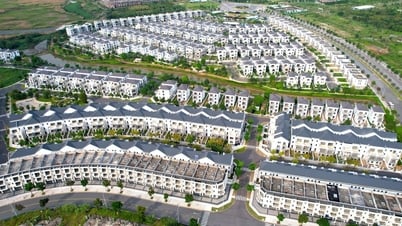Capital mobilization decreased sharply, risk of bank interest rate increase
According to a report from the State Bank, in January 2025, the total capital mobilization from residents and economic organizations of the banking system recorded negative growth, down 0.75% compared to the end of 2024.
Although deposits from residents increased by VND123 trillion in the first month of the year, this figure was still not enough to offset the sharp decline of VND233 trillion from the economic organization sector (equivalent to a decrease of 3.04% compared to December 2024). This is the first time after 5 consecutive months of increase that capital mobilization from economic organizations has shown signs of decline.
Speaking to the press, a Deputy General Director of a large joint stock commercial bank said that the bank has been trying to increase capital mobilization since the beginning of the year to prepare resources for credit growth. Although the mobilization rate this year is higher than the same period last year, it has not kept up with the loan growth rate. He added that the bank has recorded a trend of cash flow shifting to investment channels such as gold and real estate.
Figures from the General Statistics Office ( Ministry of Finance ) show that as of March 25, 2025, total capital mobilization of credit institutions increased by 1.36%, while credit in the entire economy increased by 2.49%. Thus, by that time, the gap between mobilization and lending had reached VND 1.1 million billion - and this number is likely to continue to increase.
In fact, since the beginning of the year, gold prices have continuously reached new peaks, the real estate market has also increased sharply, while savings interest rates remain low. This has made many people feel impatient, leading to FOMO (fear of missing out), shifting investment from savings to gold and land despite many potential risks.
In its latest report to the National Assembly’s Economic and Financial Committee , the State Bank admitted that interest rates are under a lot of pressure in the coming time. Firstly, lending interest rates have fallen sharply in recent times.
Second, credit demand for production, business and consumption is expected to increase sharply to achieve the economic growth target in 2025, while capital mobilization faces fierce competition from attractive investment channels such as gold, real estate and stocks. Third, although the global interest rate trend shows signs of decreasing, it remains high, especially in the context of the international financial market facing many uncertainties after the US imposed reciprocal tariffs on a number of countries.
Since the meeting between the State Bank and commercial banks on February 25, 2025, until early April 2025, 26 banks have reduced their deposit interest rates by 0.1 to 1.05%, depending on the term. However, on average, the deposit interest rate level has not changed much. As of the end of March 2025, the average lending interest rate for new loans of commercial banks has only decreased by 0.2 percentage points compared to the end of 2024.

Accelerate capital increase, issue bonds to expand lending
Mr. Tran Minh Binh – Chairman of the Board of Directors of VietinBank – commented that in 2025, the pressure on interest rates for the State Bank as well as the entire credit institution system will increase sharply compared to the previous year. “Mobilization interest rates have shown signs of a slight increase since 2024 and are still continuing the upward trend,” Mr. Binh emphasized.
Although the interest rate level at VietinBank is still under control, the bank's management said that the net interest margin (NIM) in 2025 will face downward pressure. The main reason is that capital costs are on an upward trend, while the bank is still implementing many preferential credit packages as well as support programs for businesses and people under the direction of the Government and the State Bank.
Previously, Deputy Governor of the State Bank Dao Minh Tu also said that currently, banks are lending to the economy in excess of the amount of capital mobilized, the shortfall must be compensated by own capital or re-lending capital from the State Bank.
In the context of increasingly urgent demand for credit expansion and capital growth, many banks have simultaneously implemented large-scale capital increase plans. The dividend payout ratio in shares this year reached a record high: Vietcombank approved a rate of 49.5%, VietinBank 44.64%, and MSB 20%.
This year's general meeting of shareholders also recorded a series of "huge" capital increase plans submitted to shareholders. MB plans to pay dividends in shares at a rate of 32%, thereby increasing its charter capital. NCB has received approval from shareholders to increase its capital by an additional VND7,500 billion through the private offering of 700 million shares, equivalent to 59.42% of its current charter capital. VietABank proposed a historic capital increase plan, doubling its capital from VND5,399.6 billion to VND11,582.4 billion, equivalent to an increase of 115%.
At the same time, bond issuance activities of banks have also been bustling. According to the Vietnam Bond Market Association, from the beginning of the year to mid-April 2025, the total value of bonds issued reached VND41,621 billion, of which the banking group accounted for more than 60%.
Experts at FiinGroup assessed that although many banks are focusing on increasing Tier 1 capital through issuing shares, this process is often lengthy and depends heavily on stock market fluctuations. Therefore, in the coming time, bond issuance will still be the main tool to meet credit growth needs and ensure capital safety indicators according to regulations.
The latest report of the State Bank also pointed out that, although capital mobilization from the population and credit institutions showed signs of decreasing in January 2025, the total means of payment of the whole system still increased by 1.46%. This shows that credit institutions are actively issuing valuable papers to offset the decline in traditional capital mobilization sources.
Source: https://baodaknong.vn/dong-tien-thao-chay-khoi-ngan-hang-lai-suat-nguy-co-tang-nong-250693.html







![[Photo] General Secretary To Lam receives First Deputy Secretary General of the African National Congress (ANC) of South Africa](https://vphoto.vietnam.vn/thumb/1200x675/vietnam/resource/IMAGE/2025/5/20/bb2999907e1245d5b4c7310a890d8201)




















![[Photo] Award ceremony for works on studying and following President Ho Chi Minh](https://vphoto.vietnam.vn/thumb/1200x675/vietnam/resource/IMAGE/2025/5/20/a08ce9374fa544c292cca22d4424e6c0)
![[Photo] Vietnamese shipbuilding with the aspiration to reach out to the ocean](https://vphoto.vietnam.vn/thumb/1200x675/vietnam/resource/IMAGE/2025/5/20/24ecf0ba837b4c2a8b73853b45e40aa7)

























































Comment (0)